Suicide around the world
Suicide is estimated to cause the death of 800,000 people annually (WHO, 2014), which implies that the global rate would be 10.5/100,000 inhabitants per year.
The World Health Organisation (WHO) identifies suicide as a public health priority. In the Mental Health Action Plan 2013-2030, Member States committed to work towards the global target of reducing national suicide rates by 10% by 2021 and reducing the global rate by one third by 2030, which has been included as a target in the UN Sustainable Development Goals and in the WHO Comprehensive Mental Health Action Plan 2013-2030 (Live Life, 2021).
However, it is well known that reports of suicide are often underreported. It is estimated that for every completed suicide there are many more suicide attempts and that each suicide has an enormous impact on family, friends and loved ones. This situation makes it necessary to develop actions aimed at the prevention of this important problem.
According to Macro Data (2020), the suicide rate in Spain in 2020 was 7.76 per 100,000 inhabitants, which is below the current world average rate of 9.4 per 100,000 inhabitants. Spain is among the European countries with the fewest suicides, but there is a worrying increase. Fuente: Estimaciones sanitarias mundiales de la OMS 2000-2019

Suicide in Spain
The year 2020 saw the highest ever number of suicides in our country, with 3,941 people dying as a result of suicide. According to the Observatory of Suicide in Spain, these figures represent an increase of 270 deaths compared to 2019 (an increase of 7.4%), of which 159 correspond to men (an increase of 5.7%) and 111 to women (an increase of 12.3%).
Suicide is the leading cause of unnatural death in Spain, producing 2.7 times more deaths than those caused by traffic accidents; 13.6 times more than homicides and almost 90 times more than gender violence.
In addition to suicide deaths, there are suicide attempts and suicidal ideation. According to WHO estimates, there are around 20 suicide attempts for every suicide, while other epidemiological studies suggest that ideation may affect between 5% and 10% of the Spanish population over the course of a lifetime. This means that in a year there could be around 80,000 suicide attempts per year in Spain and that between two and four million people have suicidal ideation in their lifetime. Over the last 5 years, the proportion of suicides in Spain between men and women has remained constant, although an increase is observed in 2020 in both sexes.
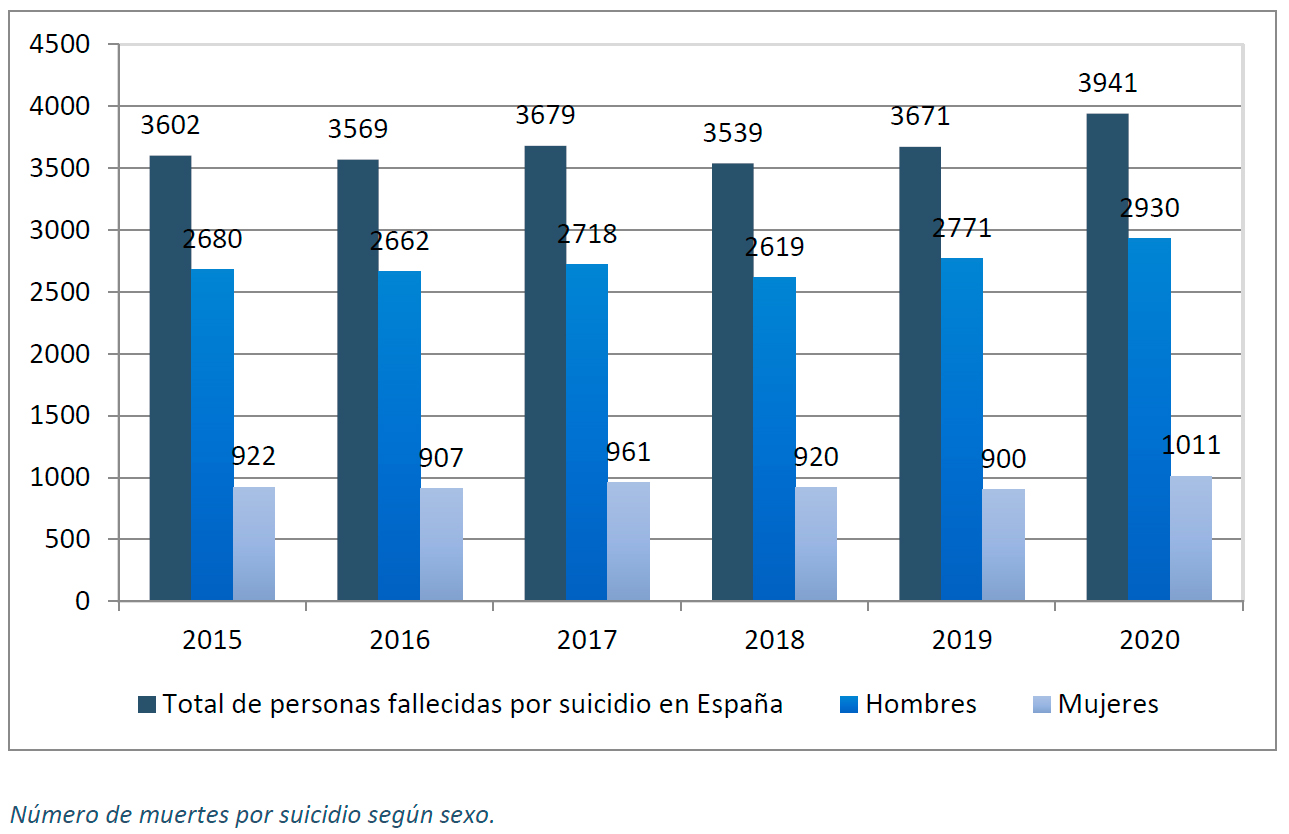
In 2020, the total number of completed suicides in Spain amounts to 3,941 deaths. It is noted that:
– Death by suicide among males continues to be higher than among females. There were 2,930 male deaths compared to 1,011 female deaths. However, this is the first time in Spain that more than 1,000 deaths by suicide have occurred among women. Suicide in women aged 50-59 has increased by 27% compared to 2019.
– On age:
o The highest number of people who died by suicide were between 40 and 59 years of age, which may indicate a link with feelings of failure in the life project.
o Suicide in people over 80 years of age has increased by 20%.
o The most shocking statistic is the number of suicides in early adolescence. There have been 14 suicides of children under 15 (7 boys and 7 girls), twice as many as in 2019. Suicide is the leading external cause of death for Spanish youth aged 15-19 and the second leading cause of death overall (300 deaths due to suicide compared to 330 deaths due to tumours).
Madrid Region
In 2020, the Community of Madrid is the third Spanish community with the lowest suicide rate. However, this rate has increased by 6.6% compared to 2019 (373 suicide deaths in 2020 compared to 350 in 2019).
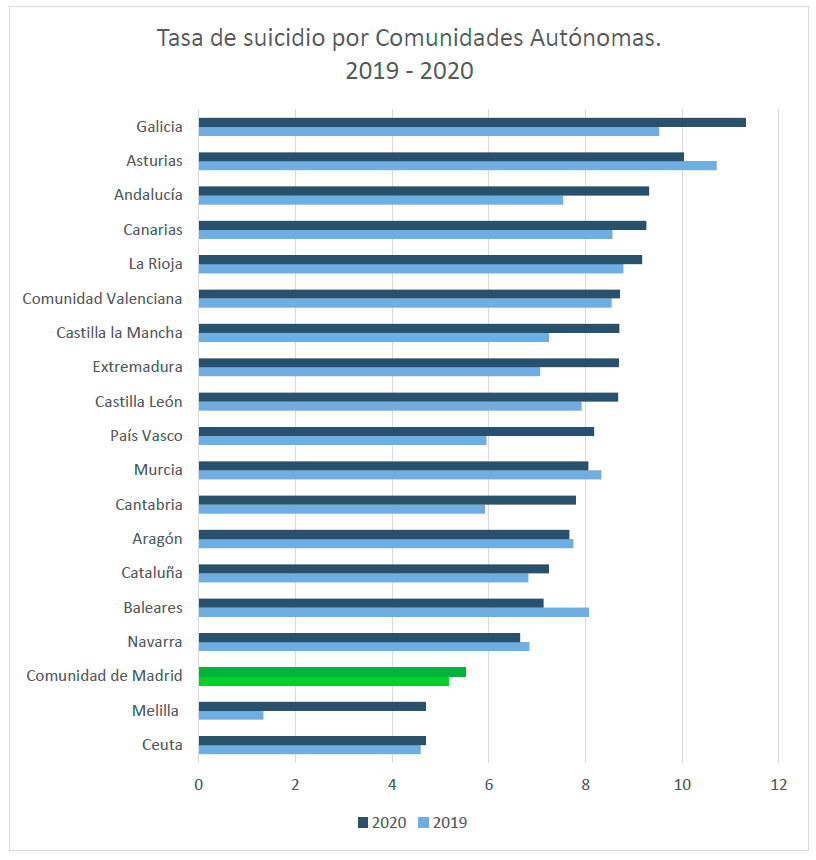
In the Community of Madrid, as in the rest of the country, there is a higher incidence in men than in women).
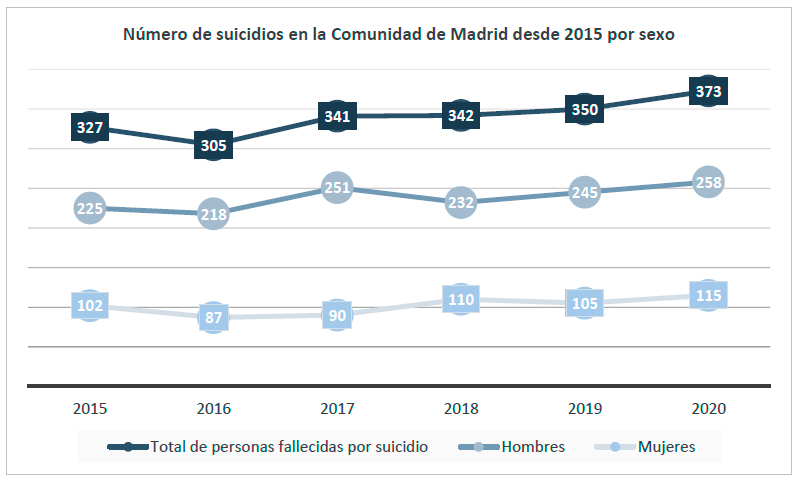
Madrid City
According to data from the General Directorate of Statistics of the Madrid City Council, there has been a dramatic rise in the number of completed suicides recorded since 2013 over the last 15 years.
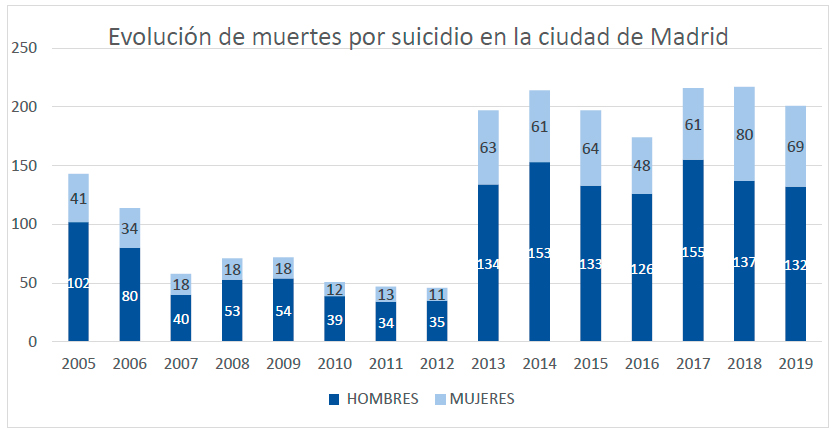
The suicide rate in the city of Madrid is lower than the national rate (6.03 compared to 7.76) but higher than that of the Community of Madrid as a whole (5.19).
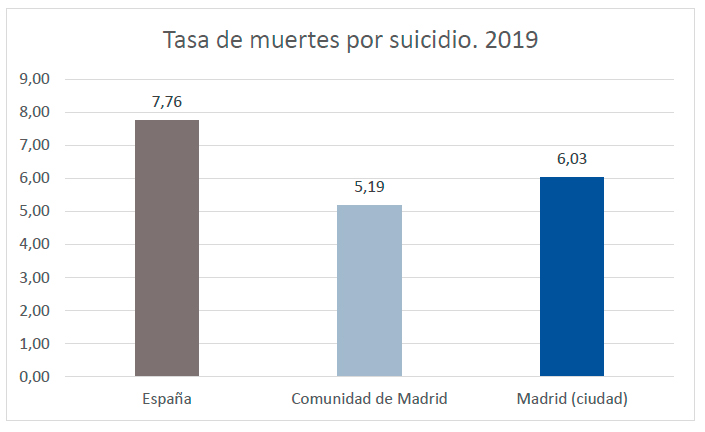
Madrid alone accounts for 49% of the total population of the Community. Deaths by suicide in our city represent 57% of deaths by suicide in the Community of Madrid.
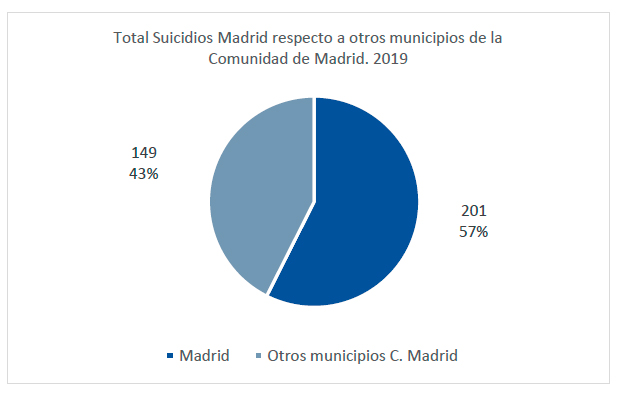
The male suicide rate in the city of Madrid is higher than in the CAM but lower than the national rate. The rate of suicide deaths among women is, however, higher than in the Community of Madrid and in Spain, although these differences are not as pronounced as in the case of men.
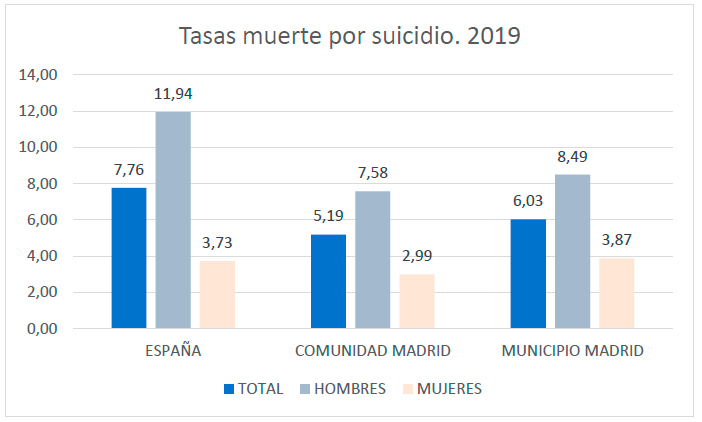
Given that there is no published data by municipality, comparisons have been made between suicide rates in the Community of Madrid and other provinces whose capitals constitute some of the largest population centres in Spain. It can be seen that the Community of Madrid has a lower rate than other provinces with large capital cities.
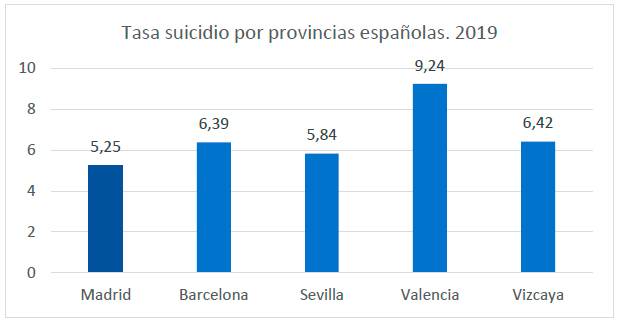
With respect to 2019, an increase in the rate is observed in the provinces indicated, except in the case of Valencia, which decreases (although it is one of the highest).
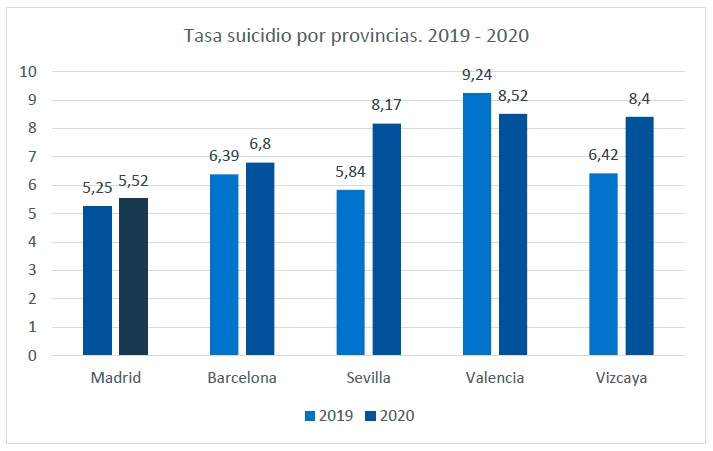
A comparison by age bracket shows that the suicide rate in the city of Madrid remains higher than that of the Community in all age brackets, but lower than the Spanish rate for all ages.
The highest gap is found in the 15-19 and 90+ age groups.
In 2019, the Community of Madrid registered 10 deaths of children under 19 years of age, 6 of which corresponded to the municipality of Madrid. With regard to people over 90 years of age, 4 suicides were recorded, of which 100% corresponded to residents in the city of Madrid.
Number of deaths by suicide registered in 2019 by age groups

